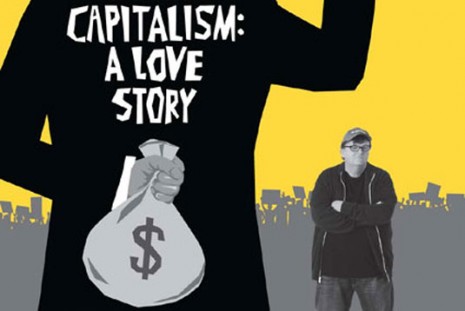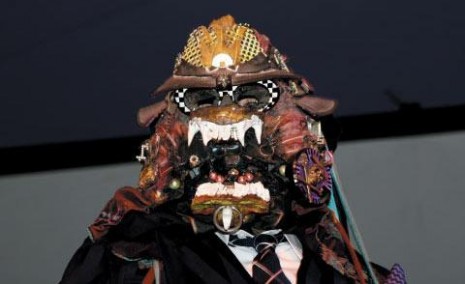
Tara and I watched Michael Moore’s Capitalism: A Love Story this weekend (it’s on the Netflix VOD currently) and I absolutely loved it. It’s a truly great film, one that I have no doubt will be looked at and revered by future generations trying to understand what the hell happened in our backwards era. I recommend it to everyone who reads this blog and cares about my opinion. It was absolutely spellbinding to me. I felt as if I wanted to cheer several times to see someone say these things and say them so powerfully. Capitalism: A Love Story, or a film just like it, needed to be made. but there is only one guy who could have pulled off something like this, gotten it funded, herded through the distribution system and gotten a message this radical the deep penetration in the culture that it deserves, and it’s Michael Moore.
Surprisingly, Capitalism: A Love Story is perhaps the least polemic of all of Moore’s films, even if it does, at root, articulately advocate the necessity of class warfare, at least at the ballot box. Most of what Moore, or his protagonists, have to say in the film would be damed difficult to refute, perhaps this is why it doesn’t seem as confrontational as Moore’s films often are. You’d have to have a very closed mind to deny the reality of what you see on display here. Even Sean Hannity would have a hard time arguing with any of it (although I doubt he watched or will ever watch Moore’s film)
To say what Michael Moore says in Capitalism: A Love Story took balls and it also took amazing skill as a storyteller, underscoring his Mark Twain-like role in American society. After a mind-numbing section where the audience is introduced to the concept of the so-called “Dead Peasant” life insurance policies some major companies take out on their non-essential employees—unbeknownst to them—where they make more money if the employee dies, he cuts to an interview with Father Dick Preston, the Flint, Michigan-based priest who married Moore and his wife Kathleen Glynn (who interviewed me for a job once, she’s super cool).
He quietly asks the priest if capitalism is evil and what Jesus would think about free enterprise and his answer is devastating. This isn’t some left-wing loony he had to search out, this is the man who married him, the local priest who, like Moore, has witnessed the tragedy and destruction the loss of the auto industry in Flint, Michigan did to their hometown. Both of these men knows what greed does and how and who it harmed. People with first and last names.
And let me tell you, this priest fucking nails it. It’s a powerful, powerful cinematic moment.
Speaking as someone who took ten people on my own 24th birthday to see Roger and Me when it was in theaters—I also released This Divided State on DVD when I was at Disinformation—maybe I’m biased, but do yourself a favor and see this film. Better still, if you watch it and you like it, consider having a screening party at your house and invite 5 or 6 friends over to watch it and discuss it afterwards. It takes two hours to watch and could open the eyes of even a devout redneck Fox News watcher (well, some redneck Fox News watchers) to what’s really going on in this country. It’s not like Glenn Beck is ever going to tell them.
Below is one of the most powerful moments in a film full of them: rare footage taken right after FDR’s final State of the Union address where he lays out the concept of a Second Bill of Rights that would have guaranteed that all Americans have “a useful job, a decent home, adequate health care, and a good education.”
God bless Michael Moore. He’s a great American.
The Middle Class in America Is Radically Shrinking. Here Are the Stats to Prove it (Yahoo! Finance)
The U.S. Economy Is A Dead Horse And The American People Are Starting To Get Really Pissed Off And Frustrated (Economic Collapse)









